Content |
|---|
Characteristics "Australian Terrier"
Coexistence is important that you have with your new friend. Before considering the acquisition of a dog of the breed "Australian Terrier" you know certain factors. Not all breeds of dogs are apt to live in an apartment, you must take into account his character, their need for exercise, their interaction with other pets, their care and if you have small children, their level of tolerance towards them.
Adaptation ⓘ5.0 out of 5 stars (based on 1 review)
|
friendly dog ⓘ1.0 out of 5 stars (based on 1 review)
|
hair loss ⓘ1.0 out of 5 stars (based on 1 review)
|
|---|---|---|
Affection level ⓘ3.0 out of 5 stars (based on 1 review)
|
Need for exercise ⓘ4.0 out of 5 stars (based on 1 review)
|
Social need ⓘ4.0 out of 5 stars (based on 1 review)
|
Home ⓘ3.0 out of 5 stars (based on 1 review)
|
Toilet ⓘ1.0 out of 5 stars (based on 1 review)
|
Friendly with strangers ⓘ3.0 out of 5 stars (based on 1 review)
|
barking ⓘ5.0 out of 5 stars (based on 1 review)
|
Health ⓘ4.0 out of 5 stars (based on 1 review)
|
Territorial ⓘ5.0 out of 5 stars (based on 1 review)
|
Cat friendly ⓘ1.0 out of 5 stars (based on 1 review)
|
Intelligence ⓘ4.0 out of 5 stars (based on 1 review)
|
Versatility ⓘ4.0 out of 5 stars (based on 1 review)
|
Child friendly ⓘ4.0 out of 5 stars (based on 1 review)
|
Surveillance ⓘ4.0 out of 5 stars (based on 1 review)
|
joy ⓘ5.0 out of 5 stars (based on 1 review)
|
History
The Australian Terrier It is a breed of dog in the Terrier family, classified in the section 2.
Due to his appearance, He is often confused with a Yorkshire Terrier large size. Is not surprising because, this breed comes from crossing a Yorkshire Terrier and different breeds of Terrier among the Skye Terrier, Cairn Terrier, the Norwich Terrier and other Irish Terrier.
Its origin goes back in the early 19th century, when accompanied by their Terrier British families travelled to Australia, and the vicissitudes of fate led those Terriers to interbreed with the natives..., and this is how many races in the world have been born.
In the early years of its existence, the Australian Terrier was known by the name “Broken-coated-Terrier” or “Broken-hair-buel-and-tan”.
The wording of the first breed standard, took place in the year 1896, While the official recognition of the same, It is located a little later… in 1933. Y, The latest revision of the standard dates from 1962.
Otros nombres: Terrier Australien
Group 3 / Section 2 – Small sized Terrier.
Physical characteristics
It is a long dog (in relation to your height), rustic looking, robust with short limbs and strong.
The head is elongated, It has the black truffle and scissor closing denture. It has pointed ears being erect and small and dark eyes. The tail is often be amputated.
The height of the Australian Terrier is maximum 25 cm. to the cross in males and 22,5 to 23 in females, the average weight is 4.5 to 5 Kg.
The hair is hard, straight and average length. that rustic look, precisely, Since hair is rough to the touch and out gives it.
The fur can be blue or silver, with stains of fire (or bronze) on the limbs and snout, or color sand clear or Griffon.
Puppies are born black solid color and change color in three months.
Observations
It is a very robust breed of dog, that often has a high percentage of Diabetes Mellitus.
What is Diabetes Mellitus?
Diabetes is defined as a disorder in the metabolism of the hydrates of carbon, fats and proteins caused by a deficiency of insulin, It can be absolute or relative.
Insulin is a hormone secreted in the beta cells of the pancreas, whose production allows to control blood sugar (blood glucose levels). Insulin deficiency causes a deterioration in the capacity of tissues to use nutrients, that translates into an increase of glucose in blood (Hyperglycemia).
Diabetes is classified according to the disease in humans, that is to say, as type I and type II.
The type I It is characterized by the destruction of beta cells, What determines the loss progressive and complete end of insulin secretion. Dogs suffering from Type I Diabetes Mellitus may have a sudden onset of symptoms due to the rapid loss of the ability to produce insulin.. These cases require insulinización from the time of diagnosis and are called diabetics 1,811 (DMID).
Other dogs may have a gradual loss of insulin secretion, that their beta cells will be destroyed with slow. These animals may have an initial period in which hyperglycemia is mild or easily controlled., in which case it's diabetic insulinoindependientes (DMIID), Although in the long term these dogs also need her.
Diabetes Mellitus type II is a little more difficult to understand and is characterized by what we call "insulin resistance" and by "dysfunctional" beta cells. The secretion of insulin by these cells will be high, low or normal, but not enough to overcome the resistance to it in the peripheral tissues.
It´s, to explain it in a graphic way, It is as if peripheral tissues do not obey the orders of the insulin or were not able to do what send it.
Regarding the metabolism or synthesis of glucose, These dogs may have DMID or DMIID, that is to say, whether or not to require insulin depending on the extent of insulin resistance and the functional status of the beta cells in terms of their ability to produce and secrete the hormone in low amounts, normal or high.
Dogs also recognizes a secondary diabetes, produced by a carbohydrate intolerance (glucose) due to the presence of a disease or a drug treatment that it antagonizes or counteracts the effects of insulin and can lead to the exhaustion of the beta cells of the pancreas with the appearance of diabetes insulinodependiente.
The owners of diabetic dogs should be aware that the routine in the treatment with insulin and food has to be respected. Two fixed doses of insulin per day associated with a palatable food that always provides the same source and the same amount of starch, always run at the same time it can reduce the risk of hypoglycemia in diabetic dogs.
In North America, area where the Australian Terrier is very popular, scientific research is being carried out on the incidence of this disease.
Character and skills
The breed standard describes the ideal Australian Terrier temperament as an alert spirit., “with the natural aggressiveness of a Buzzard and a Hunter of coverage“.
Taking into account the Classification of dogs according to their functional and obedience intelligence (Stanley Coren's "The Intelligence of Dogs") the Australian Terrier ranks number 34. Means that, is higher than the average, which indicates a good capacity for learning and training.
The Australian Terrier is a lively dog, attentive, with a facial expression that denotes intelligence, loyalty and faithfulness.
Sometimes it can become dominant, so a good training from an early age would be appropriate..
It is perfectly adapted to any type of housing, whether large or small (apartment, House, house with garden, etc.). It should be enough with daily brushing and a walk.
Images “Australian Terrier”
Videos “Australian Terrier”
Type and recognitions:
- FCI CLASSIFICATION: 8
- Group 3: Terriers
- Section 2: Small sized Terriers. Without working trial..
Federations:
- – FCI – Terriers 2 Small sized Terriers. ⓘ
- – AKC – Terriers ⓘ
- – ANKC – Terriers ⓘ
FCI breed standard "Australian Terrier"
Alternative names:
1. Aussie (English).
2. Terrier australien (French).
3. Aussie (German).
4. Terrier australiano (Portuguese).
5. Aussie, Terrier Australiano (español).
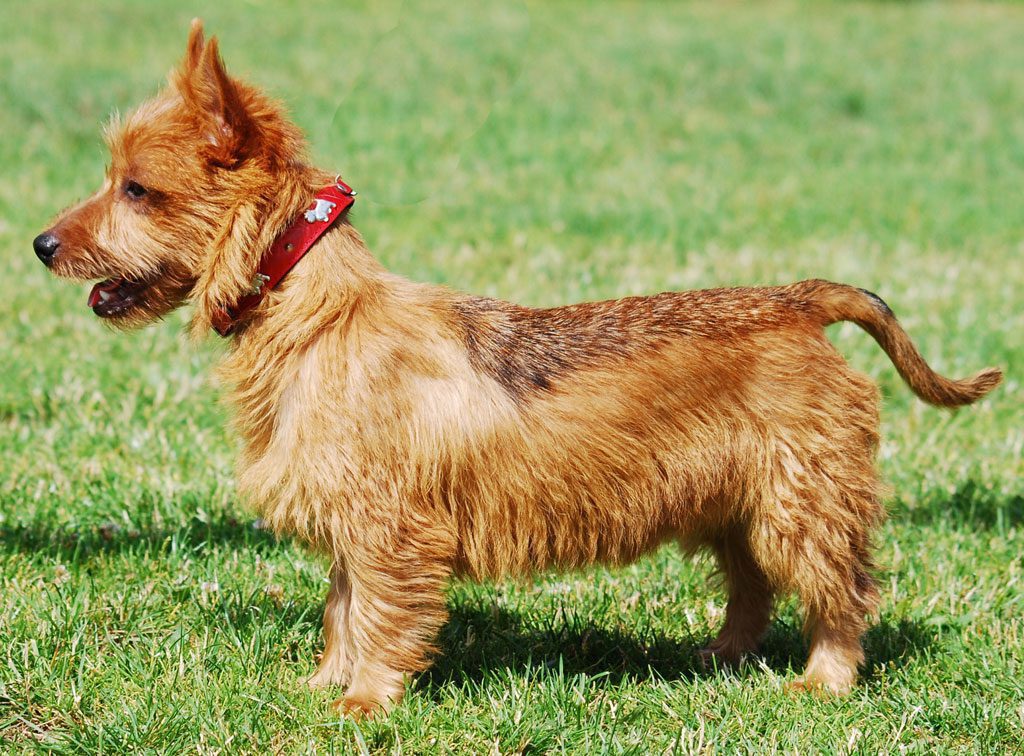
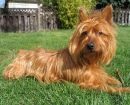
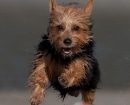
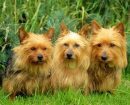
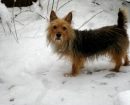
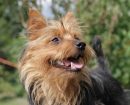
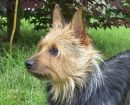
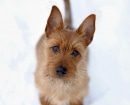
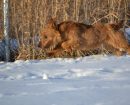
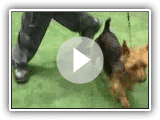 2007-Australian Terrier
2007-Australian Terrier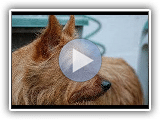 Australian Terrier (Terrier Australia) – Dog Breed
Australian Terrier (Terrier Australia) – Dog Breed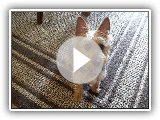 Australian Terrier does a few tricks
Australian Terrier does a few tricks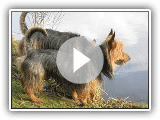 Lesnoy's Don and Danilo
Lesnoy's Don and Danilo
Visitor Rating: 5 Stars